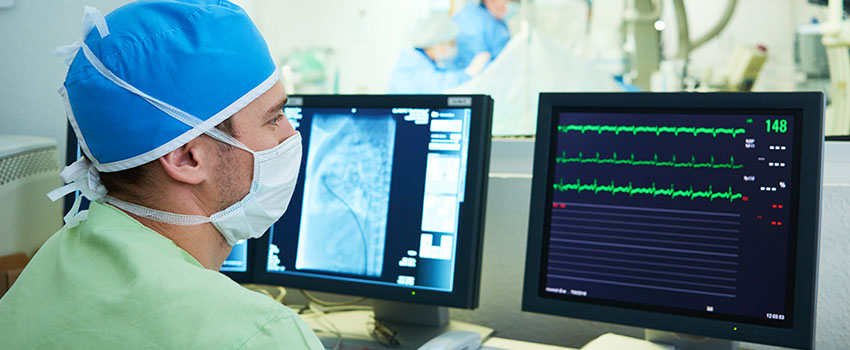
Interventional radiology
What is interventional radiology?
Interventional radiology is a subspecialty of radiology that uses imaging techniques like X-ray and ultrasound to guide small tools into the body to diagnose and treat disease.
The benefits of interventional radiology
Interventional radiology can be an effective alternative to surgery that may result in shorter recovery time and fewer side effects. There are some similarities to open surgery, but procedures are generally short and do not require an inpatient hospital stay.
Preparing for interventional radiology procedures
- Do not eat or drink after midnight, the day before the procedure.
- On the morning of the procedure, any heart/blood pressure medications as usual
- Ask your doctor about discontinuing blood thinners or aspirin before the procedure.
- Tell the staff if you are on any medication.
- You will not be allowed to drive after the procedure, so please arrange transportation.
What to expect
Before treatment
You will meet with a board-certified interventional radiologist for a consultation, who will review your medical history and discuss treatment options. Lab tests might be performed during this appointment as well. If you are a candidate for an interventional radiology procedure, it will be scheduled at a nearby hospital or clinic.
Before your procedure, you will be asked to review educational materials and follow pre-operation instructions. This might include fasting and forgoing certain medications.
Day of treatment
On the day of the procedure, you will fill out paperwork and possibly have blood drawn for final lab work. You will change into a gown and be taken to a procedure room that might feel similar to a surgical suite. You will lie on a special table, and we will dim or turn off the lights. In most cases, you will receive an injection at the start of the procedure to provide the necessary dye, medication or sedation. Interventional radiology patients rarely receive general anaesthesia. Next, they put a tool such as a catheter (a tube), or wire into your body through a small incision. The Radiologist then watches a screen as they place the tool through your body to reach the area that requires treatment.
After treatment
Procedure time varies from case to case, but is generally less than four hours. You will be taken to a recovery room and monitored closely after the procedure. After a few hours, you can have someone drive you home and assist with post-procedure instructions.

